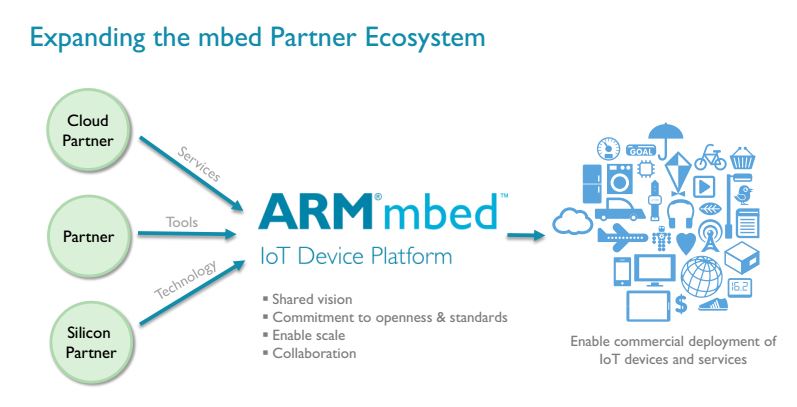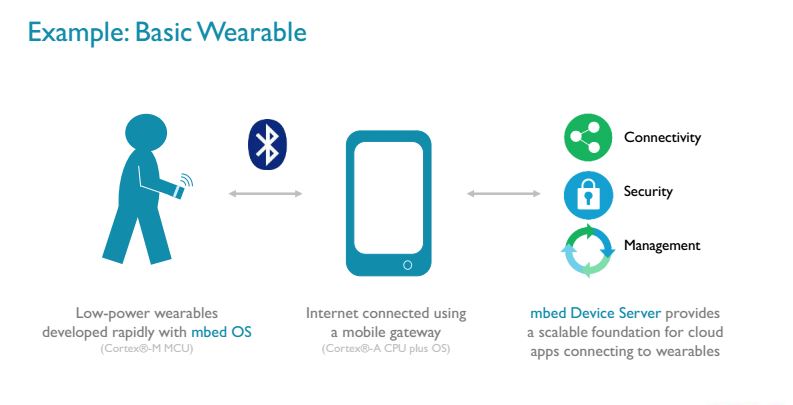ARM Launches "mbed" Standards-Based Platform To Accelerate Pace of IoT
Today, ARM launched a comprehensive IoT platform called "mbed," which is highly focused on standards to avoid fragmentation within the IoT ecosystem. This new platform can be integrated into anything from wearables to smart homes to city street lighting systems, and ARM hopes it will accelerate the evolution of IoT over the next few years.
The platform consists mainly of an "mbed OS," an "mbed Device Server" and standard hardware such as the recently-announced Cortex M7.
The mbed OS is an operating system specifically made for small IoT devices and not as competition to something like Android Wear. In fact, when ARM mentions "wearables," it's referring to smart bracelets or perhaps "smart clothes" that would be available in the future, and not, for example, a smartwatch on your wrist. The mbed OS will be free to use on the ARM architecture.
Mobile devices will serve mainly as gateways to the Internet for these IoT devices, and they will be used as the central point of control for users. This should also offer an extra degree of security, because the IoT devices themselves don't have to be connected to the Internet.
The IoT security apocalypse has been predicted for some time because security researchers realized that most of the IoT devices will not be upgraded and patched once they are sold to customers, leaving the door open to many types of attacks. Street lighting systems could be hacked to create mayhem, smart homes could have their doors unlocked or appliances could be infected with malware that later can compromise personal computers or mobile devices, once you connect to them.
The security of any IoT platform is a serious issue that ARM doesn't seem to take lightly, and it's promising several layers of security. The one that could be the most innovative is the Thread networking protocol, announced earlier this year along with Google, Nest and others.
Thread creates a mesh network between IoT devices; therefore, the IoT devices using the embed platform can remain contained within their own network and can only connect to the Internet if the owner wants to allow that through a gateway like a smartphone.
Get Tom's Hardware's best news and in-depth reviews, straight to your inbox.
The mbed platform will also support Zigbee, WiFi and Bluetooth Smart connectivity, depending on the use case and which type of wireless is more popular for that category of IoT devices. The intra-network connectivity between IoT devices using these technologies may work differently than the way Thread does.
ARM will also offer the mbed Device Server software, which helps startups create apps for IoT devices and connect to them through the Internet. The mbed Device Server will be offered as freemium to startups in order to encourage greater adoption from the beginning. The Device Server technology is based on open standards and can scale to handle the connections of millions of devices.
ARM has already signed up over 20 partners for the IoT platform, including IBM, Oracle, Freescale, AT&T, Vodafone and others, while more are expected to follow if the mbed platform takes off. Developers can get started at the mbed.org website, where they can find documentation and boards on which to test and prototype their IoT devices.
Follow Kevin Parrish @exfileme. Follow us @tomshardware, on Facebook and on Google+.
Lucian Armasu is a Contributing Writer for Tom's Hardware US. He covers software news and the issues surrounding privacy and security.



